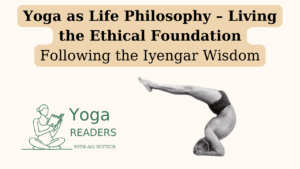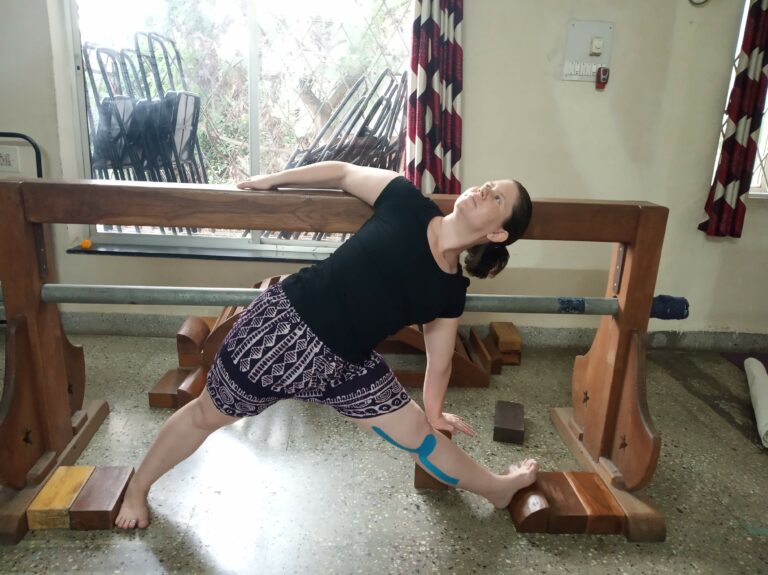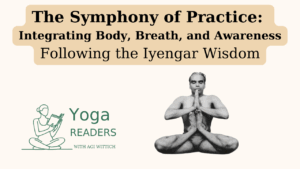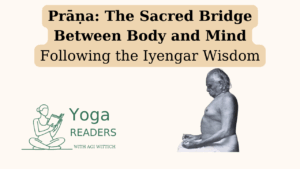
Yoga as Life Philosophy – Living the Ethical Foundation
“Yoga is the rule book for playing the game of Life, but in this game no one needs to lose.” This profound statement from

In the context of contemporary trauma-informed yoga therapeutics, the significance of mindful transitions between asanas emerges as a fundamental principle, particularly for individuals managing trauma responses and those experiencing secondary trauma through their relationships with trauma survivors. Within the methodological framework of Iyengar yoga, these carefully orchestrated transitions serve as crucial therapeutic tools, offering practitioners opportunities for enhanced bodily awareness and emotional regulation.
The therapeutic value of deliberate, measured movements becomes particularly salient when examining the neurophysiological responses of individuals affected by trauma. Research in trauma studies indicates that rapid or unexpected transitions can activate sympathetic nervous system responses, potentially triggering fight-or-flight mechanisms. In contrast, mindful transitions facilitate parasympathetic activation, supporting the maintenance of optimal arousal levels within one’s window of tolerance.
The methodological approach to transitions in trauma-informed Iyengar yoga encompasses several key therapeutic elements. Primary among these is the enhancement of proprioceptive awareness through careful attention to each phase of movement. This heightened awareness serves multiple therapeutic functions: it strengthens the mind-body connection, develops greater bodily autonomy, and provides opportunities for practitioners to process somatic experiences in a controlled, safe environment.
Within the structured environment of an Iyengar yoga class, these transitions receive particular attention through precise, detailed instruction. Teachers articulate specific directives regarding anatomical positioning, such as the precise placement of feet, the engagement of muscle groups, and the orientation of joints. This level of detail serves not merely technical purposes but provides essential cognitive anchoring points that support practitioners in maintaining present-moment awareness.
The implementation of slow transitions offers practitioners opportunities to develop greater agency over their physical experience. This enhanced sense of control proves particularly significant for individuals managing trauma responses, as it directly addresses common trauma-related challenges such as dissociation or hypervigilance. Through careful attention to transitional movements, practitioners can develop increased capacity for self-regulation and bodily awareness.
Moreover, the emphasis on mindful transitions creates natural pauses within the practice sequence, allowing for integration of both physical and emotional experiences. These intentional spaces provide opportunities for practitioners to process emergent sensations or emotions without becoming overwhelmed. This aspect proves particularly valuable for individuals working with trauma, as it supports the development of increased tolerance for bodily sensations and emotional experiences.
The application of props during transitions further enhances their therapeutic value. Strategic prop usage provides both physical and psychological support, creating a tangible foundation for safe exploration of movement. This material support helps practitioners maintain stability and control throughout transitional movements, fostering a sense of safety that facilitates deeper engagement with the practice.
From a therapeutic perspective, these mindful transitions serve as micropractices in emotional regulation and bodily awareness. Each transition presents an opportunity to observe internal states, practice self-regulation, and develop greater facility with managing challenging sensations or emotions. This incremental approach to developing self-regulatory capacity aligns with current understanding of trauma recovery processes.
The implications of this work extend beyond the immediate context of yoga practice. The skills developed through mindful transitions—including enhanced body awareness, emotional regulation, and capacity for present-moment attention—generalize to daily life situations. This transfer of learning represents a significant therapeutic outcome, supporting practitioners in managing stress and trauma responses in various contexts.
Furthermore, the emphasis on slow, mindful transitions addresses a fundamental challenge in contemporary society: the tendency toward rapid, often unconscious movement through both physical and emotional experiences. In the context of trauma recovery, this societal pattern can exacerbate symptoms and impede healing processes. The deliberate cultivation of mindful movement offers a therapeutic counterpoint to this cultural tendency.
Regarding academic research, the integration of mindful transitions within trauma-informed Iyengar yoga practice represents a sophisticated approach to trauma recovery work. Through careful attention to the quality and pace of movement, practitioners develop enhanced capacity for self-regulation and bodily awareness. This methodological approach offers promising applications for trauma recovery while raising important questions for further research regarding the mechanisms through which such therapeutic changes occur.
In conclusion, the emphasis on mindful transitions within trauma-informed Iyengar yoga practice provides a valuable therapeutic tool for individuals managing trauma responses. Through systematic attention to transitional movements, practitioners develop enhanced capacity for self-regulation and bodily awareness, supporting broader trauma recovery processes. This work contributes to the evolving field of trauma-informed yoga therapy while offering practical applications for individual healing and growth.

“Yoga is the rule book for playing the game of Life, but in this game no one needs to lose.” This profound statement from

“The rhythm of the body, the melody of the mind, and the harmony of the soul create the symphony of life.” With these poetic

“Prāṇa is the vehicle of consciousness.” — B.K.S. Iyengar, Light on Life This concise yet expansive statement from B.K.S. Iyengar reveals a foundational truth:
Agi Wittich is a yoga practitioner since two decades, and is a certified Iyengar Yoga teacher. Wittich studied Sanskrit and Tamil at the Hebrew University of Jerusalem, Israel, completing a PhD with a focus on Hinduism, Yoga, and Gender. She has published academic papers exploring topics such as Iyengar yoga and women, the effects of Western media on the image of yoga, and an analysis of the Thirumanthiram yoga text.